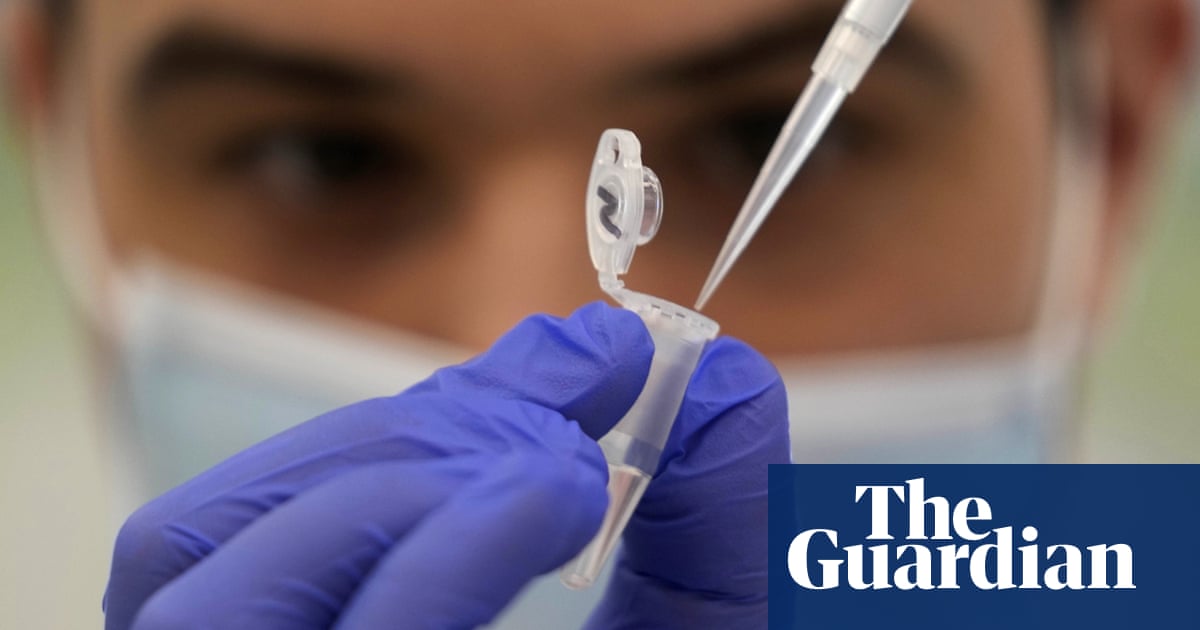
At the peak of the Covid pandemic, UK labs were sequencing thousands of Sars-CoV-2 genomes a day to keep track of circulating variants, and identify any new ones that emerged.
Now researchers at the Sanger Institute are launching a project that could ultimately achieve something similar for the numerous other respiratory viruses that make us sick – and fill up UK hospital beds – each year.
The Respiratory Virus and Microbiome Initiative will lay the groundwork for large-scale genomic surveillance of multiple respiratory viruses, including influenza, RSV, adenovirus and rhinovirus, as well as monitoring for emerging threats.
“It comes out of the simple idea that what we’ve done for Covid, we should now be doing for all respiratory viruses, because if we can establish a better understanding of these viruses, we can be in a better place to understand their transmission and how to develop vaccines against them,” said Dr Ewan Harrison at the Wellcome Sanger Institute, who is leading the initiative.
His team is developing genome sequencing methods that could enable a single respiratory sample to be taken from any NHS patient, and rapidly identify which virus, or viruses, are present – something Harrison believes could be possible, at least in a limited capacity, by the autumn.
“This is hugely important and massive and a much needed step change in how we monitor or test for infection,” said Dr Catherine Hyams at the University of Bristol, who is studying how the Covid-19 pandemic has affected the spread of respiratory viruses.
Existing UK surveillance programmes keep track of certain viruses, such as influenza and Covid, by testing a representative sample of patients with respiratory infections using virus-specific PCR (polymerase chain reaction) tests. But PCR tests work by probing for known sequences of DNA from specific viruses. If you are not looking for that virus – or it’s DNA sequence has changed – it will not be detected.
Patients may also be tested for specific viruses if their symptoms are severe enough to warrant hospital treatment, to help guide their care. However, there is currently no single test that can detect all respiratory viruses, and patients can have more than one infection at one time, meaning other infections may be missed.
So-called “metagenomic sequencing” gets around this problem by reading out the sequences of all of the genes that are present in a sample, with no assumptions about what to expect. These sequences are then compared to genetic databases to identify which organisms are present.
“It allows you to detect known viruses, but also perhaps new viruses, or viruses that have mutated and are therefore no longer picked up by [standard PCR tests],” said Dr Antonia Ho, a consultant in infectious diseases and clinical senior lecturer at the MRC-University of Glasgow Centre for Virus Research.
The Sanger team will be working closely with partners at the UK Health and Security Agency and other public health bodies to translate this real-time data into strategies that could help keep people healthy and reduce pressure on NHS beds.
Knowing which bug, or bugs, are the cause of someone’s illness, could help to guide their individual treatment, but even greater benefits of such data are to be had at the population level.
For one thing, it could ensure existing vaccines are as protective as possible. “The public health impact of this should not be underestimated and has been clearly demonstrated by the Covid-19 vaccine programme. This approach can also be used to monitor how effective vaccine programmes are, and if combined with data on the severity of illness would be especially powerful,” Hyams said.
Monitoring for new strains that could escape current treatments or vaccines should also enable scientists to develop new strategies to contain their spread, including better tests, treatments and modified vaccines.
Researchers will also study the data to better understand the transmission and evolution of respiratory viruses, as well as seeking to identify new viruses and potential pandemic threats. Doing so will lead to a better understanding of how these viruses interact with one another, and could act as an early warning system for new viruses.
Hyams said: “Understanding which specific strains of each virus is causing disease in patients, and if there are multiple strains or multiple viruses present at any one time will hugely change our understanding of how viruses lead to disease, which viruses tend to coexist, and the severity of disease caused by each virus. This will allow us to better understand the mechanisms by which different viruses cause disease as well as identifying which patient groups may be at risk from severe disease due to specific infections.”
The ultimate goal is to determine all of the genes and all of the species – including viral, bacterial and fungal species – present in a single nose swab sample. Doing so could shed new light on the microbial ecosystem on the lungs, and how it influences someone’s risk of infection.
Ho said: “We know that quite often chest infections are not caused by one virus or one bacterium, it’s often a kind of ecosystem that can get disturbed by an infection, or taking antibiotics, or a change in temperature. There is also increasing understanding that viruses might interact with each other, so if there’s high circulation of one virus, it might prevent you from getting another – or it might make you more susceptible.
“The opportunity to understand this ecosystem, and how viruses and bacteria interact with each other, it’s very exciting.”
If successful, the initiative could even become a blueprint to strengthen virus tracking in other countries – essential if future pandemics are to be prevented.
Prof Gordon Dougan, director of infectious disease at Wellcome, said: “Genomic sequencing offers incredible opportunity to track viruses globally. It can give researchers and policymakers a finger on the pulse of where and how they are circulating. This is vital information for preparing healthcare and research systems.”












